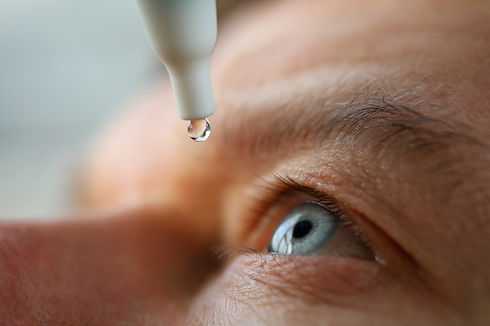
Dry eye disease
According to a survey conducted in Canada, approximately 1 out of every 5 Canadians have dry eyes. If you were recently diagnosed with dry eyes, there’s more meaning behind those 2 words. Your eye health professional will be able to tailor a proper treatment plan for you!
Normally, your tears and tear film contain a mix of water, oils, and proteins. When you experience dry eye and related symptoms, it is often a result of is an imbalance in the amount of water, oil, and/or proteins in your tears and tear film.
Causes
Dry eye is a complex disease, which may be caused by a single or multiple factors! Possible causes may include:
-
Aging
-
Hormonal changes
-
Systemic disorders (e.g., Sjogren’s syndrome, lupus, etc.)
-
Environmental conditions (e.g., smoke, dust, pollens)
-
Certain medications
-
Eye surgeries
-
Chemo/radiotherapy
-
Contact lenses
-
Computer vision syndrome


Symptoms
Are you experiencing one or more of the following signs and symptoms of dry eye disease?
-
A stinging, burning, or scratchy sensation of the eyes
-
Watery eyes
-
A sensation of having something in your eyes (foreign body sensation)
-
Eye fatigue
-
Blurred vision
-
Light sensitivity
-
Stringy mucus in or around your eyes
-
Eye redness
-
Difficulty wearing contact lenses
-
Difficulty with nighttime driving
If so, you may have dry eye disease!
When to see a doctor
Consult with your doctor if you've had prolonged signs and symptoms of dry eyes, including red, irritated, tired or painful eyes. Your doctor can take steps to determine what's bothering your eyes or refer you to a specialist.


Not Enough Tears & Aqueous Deficient Dry Eye (ADDE)
The water glands (lacrimal glands) that produce your tears may not be functioning optimally, making your eyes feel dry or so called aqueous deficient!
Your tears lubricate and protect the ocular surface. If there isn’t a sufficient amount, you may experience discomfort with each blink. The friction from your eyelids against your delicate tear film may result in an uncomfortable experience.
Not Enough Oil & Evaporative Dry Eye (EDE)
Your eyelids are like the windshield wipers of your car, and the meibomian glands are like the jets that expel the washing fluid. Every time you blink, your windshield wipers (eyelids) help expel the fluid (lipids) to prevent evaporation of your tears.
Your meibomian glands along the eyelid margin may be clogged or not producing sufficient lipids to cover the tear film. This can lead to rapid evaporation of tears and consequently, dry eyes!


Managing dry eye
Dry eye symptoms can bring a great level of discomfort to your daily life! Simple dry eye management strategies can go a long way – using a humidifier, looking away at something 20 feet (ca. 6 metres) away every 20 minutes for 20 seconds (a.k.a. 20-20-20 rule), and drinking water.
If dry eye symptoms persist, treatment options may include warm compresses on the eyes, practising daily eyelid hygiene, and using lubricating eye drops, also known as artificial tears, and other dry eye treatments.
How CandorVision can help with your dry eye
CandorVision offers a wide selection of high-standard dry eye treatments for millions of Canadians suffering from dry eye. Talk to your eye health professional and find out which treatment suits your needs!

Source: Caffery B, Srinivasan S, Reaume CJ, Fischer A, Cappadocia D, Siffel C, Chan CC. Prevalence of dry eye disease in Ontario, Canada: A population-based survey. Ocul Surf. 2019 Jul;17(3):526-531. doi: 10.1016/j.jtos.2019.02.011. Epub 2019 Feb 27. PMID: 30825521.








